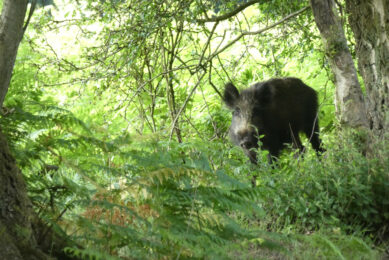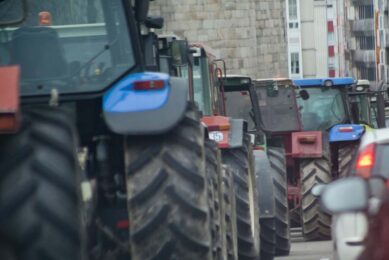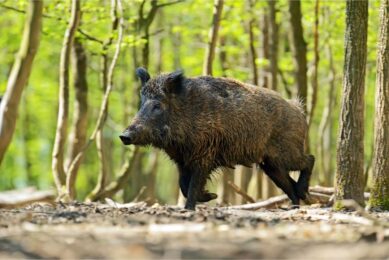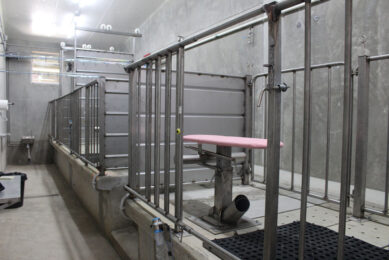Healthy pig farming is only a couple of pages away
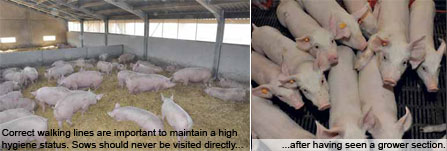
Does a reference book which covers every aspect of pig farming from an angle of hygiene exist? Four Belgian pig experts thought the world could do with a work like this and set themselves to write it. The book was launched earlier this year, and Pig Progress now presents a tip of the veil.
By Wout Maes, business support manager CIS; and Bart Danneels, product manager; Cid Lines, Belgium
Pig farming is a dynamic sector which has undergone enormous changes in recent years. Globalisation means that pork that ends up on our plate can come from anywhere in the world. At the same time, consumers now shop in a different way from how they used to in the past and prefer to go to a supermarket where they can choose from a huge range of products instead of going to the local butcher.
Stringent demands imposed by these retailers have put pig farmers’ margins under pressure and are forcing them to make savings by using economies of scale. This trend towards ever bigger farms means that production costs and optimising efficiency have become key concepts in modern pig farming.
In order to be able to optimise production results, pig farms have to aim for a high health status, so as to keep the costs of disease prevention under control. This can be done, for example, by putting SPF (Specific Pathogen Free) sows into a farm or, more easily, by introducing synchronised group management systems.
In addition to this changed market situation, pig farmers also have to comply with a string of regional guidelines and European directives, which not only impose strict rules with regard to reducing ammonia emissions and managing manure, but also regulate other areas such as the group housing of sows for better animal welfare.For the farm manager, making the right decisions for his or her farm is a very difficult task and one which involves taking into account all the aspects of modern pig farming. A good reference work, however, combining all aspects did not seem to exist. That inspired Belgian authors Ruben Brabant, Wout Maes, Nele D’Hoop and Helena Brutsaert to take the challenge and to compose one themselves. The result is called ‘Pigs. The complete guide to healthy pig farming’ – and a few extracts are presented in this article.
Abstract 1: Daily operations:
Serving pens
The sows should arrive in the serving pens in good condition, which applies to gilts as well as sows. What happens in the farrowing pen determines the condition of the sow and the key is to make sure they eat enough. Being underweight or overweight will cause problems in coming on heat and achieving optimum ovulation. Sows normally come on heat four to six days after weaning. This is stimulated by giving them plenty of light in the serving pen, by ‘flushing’ them with a service feed or with lactation feed and letting the teaser boar walk around in front of them. The sows should see the boar during the on-heat check and serving, as this promotes a good standing reflex. Make sure that the teaser boar used is active. Avoid housing the teaser boars too close to the service pen, so that the sows don’t get used to them.
Caution: the teaser boar can also be a significant spreader of pathogens. Make sure that he is in good health (no coughing, diarrhoea, etc.). Have him just walk past the sows, but don’t let him serve them to avoid infections of the reproductive system.The sow needs to be inseminated 12 to 24 hours after her first standing reflex. The more precisely you time the moment of insemination, the smaller the number of returns will be, which means fewer womb infections and a greater number and uniformity of the piglets born. Artificial insemination (AI) is preferable in terms of working efficiency and homogeneity of litters. Using AI reduces the risk of infection. During insemination it is a good idea to use breeding buddies, which ensure a better standing reflex.
Hygienic artificial insemination:
some tips:
- Make sure the serving environment is clean: manure must be removed and disinfectant powder put down.
- Clean the vulva using a paper towel.
- Use a non-irritating disinfectant spray.
- Use disposable catheter.
- Use enough lubricant, but don’t let the container touch the catheter.
- Lubricant should be kept in a clean, sealed container.
A pregnancy check can be carried out from 23 days after insemination. This is done by ultrasound or echography. After pregnancy has been confirmed, move the sows to the gestation unit.
Abstract 2: Walking lines
Pigs
The walking lines should be laid out in such a way that physical contact between different animal groups is avoided at all times.
After pigs have been placed in their pens, the areas they have walked over should be cleared with a shovel and broom and then cleaned with water and disinfectant.
People
When checking the animals, a producer should walk through the sections in the order as depicted in Figure 1. Ideally each section should be completely separated from the other, with an entry facility in-between.
Hygiene procedure between the sections
You are strongly advised to implement “hygiene procedures” at the exit/entrance between the different sections of the farm. It is very important to change boots and clothing (following the different colour codes) and to keep tools and equipment from the different sections separate. You should wash and disinfect your hands regularly.
Tools and equipment from different sections must be strictly separated from each other in order to keep contagion from one section to another to a minimum. After all, contaminated tools and equipment (especially if contaminated with manure) can be an important source of infection. If you can’t avoid taking tools and equipment from one section to another, these must at least be cleaned and disinfected thoroughly.The farm’s own tools and equipment should be confined to a single section using a colour code (this can be applied with tape). Use the same colours as for clothing and footwear. Don’t forget to apply this to accessories such as syringes, catching straps, driving boards, etc.
It is a good idea to dismantle all syringes used regularly. The parts should be cleaned and disinfected by boiling or using disinfection alcohol or a UV-lamp.
Smooth materials are more hygienic and easier to clean than rough materials.
Abstract 3: Cleaning – disinfection
Many pig farmers are familiar with modern cleaning and disinfection protocols, but all too often they don’t carry them out correctly, as they perceive these tasks as tiresome, repetitive and pointless.
However, the results of the entire procedure stand or fall with the compliance and correct application of each stage. For example, disinfection serves little purpose if the cleaning procedure is not followed correctly.
Before washing
A powerful soaking agent, used before the washing phase, improves the penetrative capacity of water in dirt thanks to its moistening effect, dissolves the fats in manure by its detergent capacity and also helps to remove the biofilm which will otherwise be left on surfaces if soaking agents are not used. By making the removal of dirt easier in the washing phase itself (using a high-pressure cleaner) you save time and water, as well as reducing the wear and tear of stall installations and cleaning equipment. This is definitely the best way to clean severely contaminated buildings such as growing-finishing pens.
Gel cleaner
Nowadays gel-forming cleaners are also used for pen cleaning. Apart from the practical advantage (more time to clean the lathered pen component), the longer contact time achieved allows a greater soaking-in time (the detergent has more time to loosen the dirt).
After washing phase
A soaking agent applied after the most visible dirt has been removed, gives better quality cleaning. This in turn means you can expect an even better result from the disinfection, which is always impaired if any manure or food-remnants are left behind. This is particularly suitable for buildings with less stubborn dirt, such as farrowing pens.
Often the rinsing phase which follows is not very effective. If dirt is removed from the surface it has stuck to, using a high-pressure cleaner, it is generally moved by the jet of water, but not actually forced into the manure reservoir. The rinsing away of the loosened dirt with a water jet set at a low pressure, but with a high yield makes this process significantly more efficient. The loosened dirt is not continually moved around the pen, but immediately disappears into the manure reservoir. You must make a point of checking that you don’t leave any puddles of rinsing water behind (don’t forget the feeders and drinkers). Any disinfectant which ends up in these puddles will be immediately diluted to a less effective concentration.
Before commencing disinfection, you should let the building dry. Sometimes this may take too long if you are relying on natural evaporation. This is especially the case in humid autumn weather or in farrowing pens on farms using a four-week system, where the sections are left empty only for short periods. In this case you should use the building heating to speed up the drying process.A good disinfectant needs to meet a number of requirements.
- Broad spectrum: check whether it has a proven effect on the most common (and possibly more spe-cific) swine pathogens
- Quick and efficient in low concentrations
- Sufficiently effective where organic materials are present
- Good penetrative capacity (very important for porous materials like concrete)
- Doesn’t damage the building equipment
- Is compatible with the detergent and water you are using
- Works even at lower temperatures
- Non toxic for people or animals
- Biodegradable
- Complies with local regulations and (biocide) legislation: only use a registered disinfectant.
| A guide to healthy pig farming The book Pigs, a complete guide to pig farming, published by Belgian hygiene product manufacturer Cid Lines, aims to explain all aspects of pig farming in order to help the farmer run a productive farm and deliver a healthy and food safe product. It can also be used as a guide to make day-to-day decisions on the pig farm. This guide is for sale through the website (www.cidlines.com) or by e-mail info@cidlines.com. The guide is available in English, Dutch and Spanish and is being translated in German and French. Other languages will follow. In addition to the guide, Cid Lines has also developed different addenda. They are tools that can be implemented straight away at every farm, to assist in executing procedures related to the health of the farm in a consistent way. These can be downloaded from the company’s website as well. |



